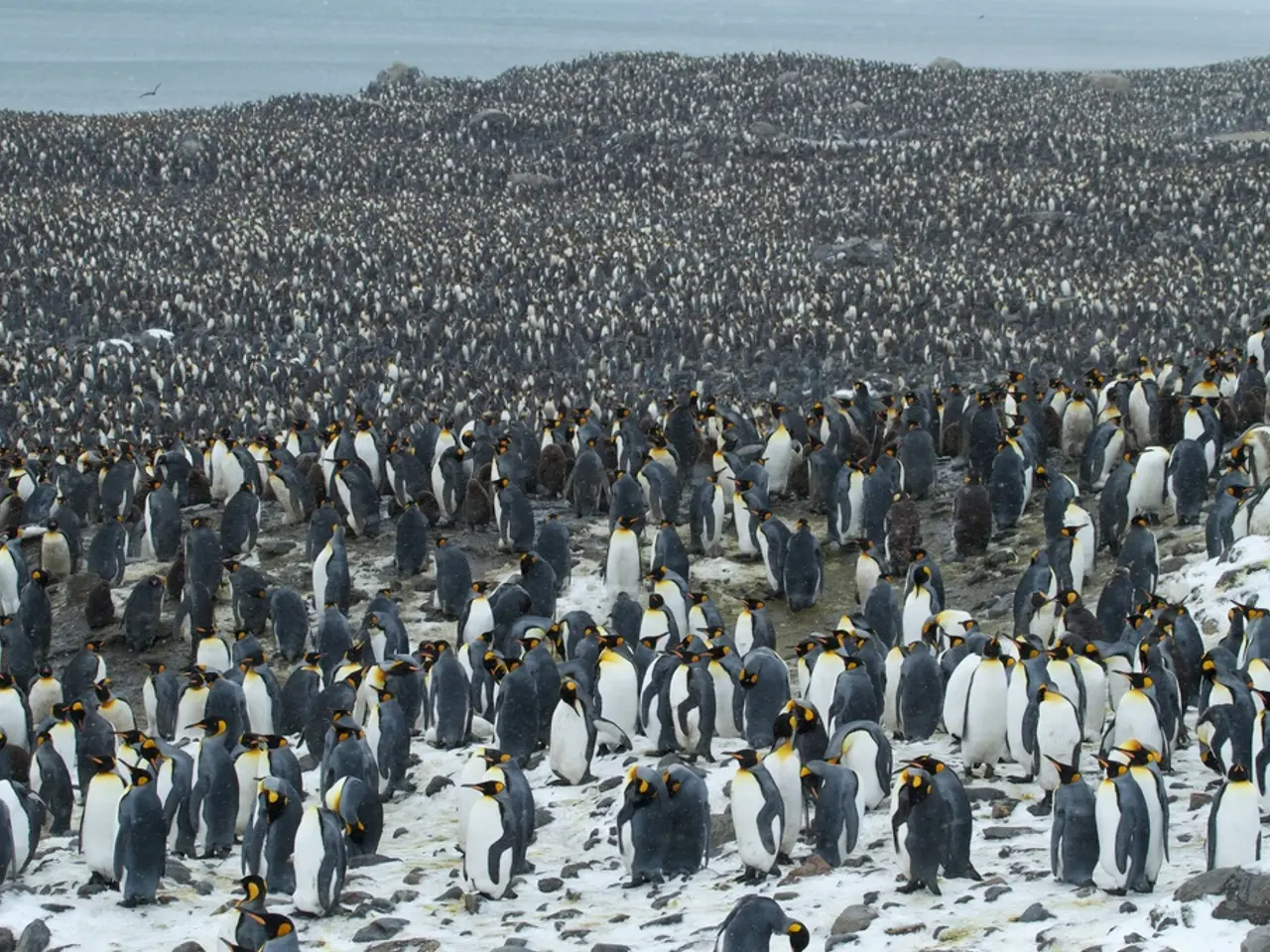Bureaucratic Clashes and Biodiversity Conflicts: An Exploration
In the realm of penguin conservation, human bureaucracy plays a significant role, shaping outcomes through complexities and inefficiencies in international treaties, fisheries management, tourism regulation, and grassroots activism.
International treaties, such as the Antarctic Treaty System and the Convention on the Conservation of Antarctic Marine Living Resources, are designed to protect penguins and their habitats. However, these agreements often involve multiple countries and layers of bureaucracy, which can slow down coordinated conservation actions, particularly for species whose habitats span national boundaries or international waters. Diplomatic coordination and decision-making processes may be hindered by competing national interests, leading to delays in urgent action when penguin populations are declining.
Fisheries management bureaucracy can both aid and hinder penguin conservation. Regulations aimed at sustainable fishing can protect penguin food sources and reduce bycatch. However, overly complex or poorly enforced regulations may fail to adequately protect penguins, or create delays in response to emerging threats.
Tourism regulation involves permitting, zoning, and impact assessments managed by bureaucratic institutions. While regulation can mitigate human disturbance to penguin colonies, bureaucratic delays or conflicting policies between tourism promotion and conservation goals can undermine effective protection.
Grassroots activism faces bureaucratic challenges in terms of permit acquisition, funding, and recognition. Red tape can limit local community involvement in conservation, although activism often works to push bureaucracies towards more effective and inclusive environmental governance.
Penguins, with their diverse species ranging from the Emperor to the Little Blue, are sentinels of ocean health, indicators of global change, and reminders of our shared responsibility for the environment. However, they are vulnerable to unique threats such as climate change and habitat loss. Warming oceans and melting ice are reshaping penguin habitats, causing entire colonies to disappear.
New technologies and innovative policies are helping scientists monitor penguin colonies and respond quickly to emerging threats. Collaboration between countries, scientists, and local communities is proving effective in creating positive change for penguin conservation. Yet, national commitments to reduce greenhouse gas emissions often fall short, and adaptation plans may take years to implement.
The struggle of penguins highlights the potential for human systems to hinder conservation efforts, and the need for more adaptive and responsive policies to protect them. Balancing bureaucratic governance with flexibility and local engagement is crucial for effective penguin conservation. The fate of penguins, and the ecosystems they represent, rests on the choices we make and the systems we create to address climate change and conservation challenges.
[1] International treaties and their impact on penguin conservation. (n.d.). Retrieved from www.penguins.org/treaties [3] Grassroots activism and its role in penguin conservation. (n.d.). Retrieved from www.penguins.org/activism
[4] Despite advancements in research and technology, climate change remains a significant and evolving threat to penguin conservation, necessitating urgent policy-and-legislation action.
[5] The impact of climate-change on penguins and their ecological niches is further compounded by the challenges of energy production and consumption, particularly in regions where penguins reside.
[6] Recognizing the intersection of penguin conservation, environmental science, and the broader political landscape, it is essential to support policies promoting renewable energy, sustainable development, and conservation programs.
[7] The deleterious effects of war-and-conflicts have long been recognized, and their impact on penguin habitats and ecosystems is a troubling concern for conservationists worldwide.
[8] Casino-and-gambling trends, particularly in cities like Las Vegas, have resulted in increased urban expansion and habitat fragmentation, thereby threatening penguin populations through displacement and alteration of their habitats.
[9] To ensure effective penguin conservation, a multidisciplinary approach is necessary, incorporating perspectives from ecosystems, climate science, politics, and social issues like crime-and-justice. Monitoring and reporting on these issues through general-news outlets can raise public awareness and drive policy changes that foster healthy penguin populations and protected ecosystems.




